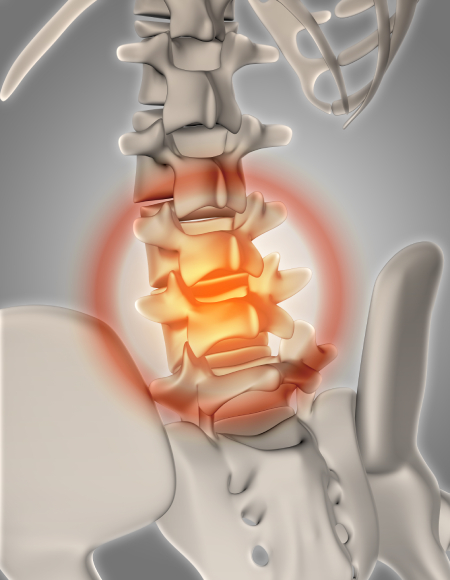Spinal Tumor Resection
Precision Treatment for Spinal Tumors
Spinal tumor resection is a specialized surgical procedure designed to remove tumors from the spine or the surrounding tissues, such as the spinal cord or nerve roots. Spinal tumors can be benign (non-cancerous) or malignant (cancerous), and their location and size can impact the function of the spine, causing pain, nerve compression, weakness, or even paralysis. The goal of spinal tumor resection is to remove the tumor while preserving as much of the healthy spinal tissue as possible, alleviating symptoms, and restoring spinal stability. At the Brain and Spine Center of Texas, we are committed to providing advanced, compassionate care for patients requiring spinal tumor resection.
Our team of highly skilled neurosurgeons and spine specialists utilizes state-of-the-art techniques, including minimally invasive approaches when appropriate, to ensure the best possible outcomes. With extensive experience in spinal tumor resections, we prioritize safety, precision, and recovery to help our patients regain their health and quality of life.
When is Spinal Tumor Resection Necessary?
Spinal tumor resection is typically recommended for patients who suffer from:
- Pain that is not responsive to conservative treatments like medication or physical therapy.
- Neurological deficits, including weakness, numbness, or loss of coordination due to tumor compression on the spinal cord or nerves.
- Progressive symptoms such as difficulty walking, loss of bladder or bowel control, or even paralysis caused by tumor growth affecting the spinal structures.
- Malignant tumors that require surgical intervention to prevent further spread of cancer or reduce the risk of spinal damage.
In some cases, spinal tumor resection may be part of a comprehensive treatment plan that includes radiation therapy or chemotherapy to treat malignant tumors or prevent recurrence.
The Spinal Tumor Resection Procedure: What to Expect
Spinal tumor resection is typically performed under general anesthesia. The procedure involves several crucial steps:
- Pre-Surgical Planning – Before surgery, imaging studies such as MRI or CT scans are performed to map out the tumor’s exact location, size, and impact on surrounding tissues. This helps the surgeon plan the safest and most effective approach.
- Incision and Exposure – Depending on the tumor’s location, the surgeon may access the spine through an incision in the back, side, or even the front (anterior approach). In some cases, minimally invasive techniques are used to reduce muscle disruption.
- Tumor Removal – The surgeon carefully removes the tumor while preserving as much healthy tissue as possible. This may involve removing part or all of the vertebrae or spinal structures surrounding the tumor to ensure complete resection.
- Spinal Stabilization – If necessary, the spine may be stabilized with the use of hardware, such as screws, rods, or bone grafts, to prevent instability caused by the removal of the tumor.
- Closing the Incision – Once the tumor is removed and any necessary stabilization is performed, the incision is closed, and the patient is moved to recovery.
The duration of the surgery can vary depending on the complexity of the procedure, but it typically lasts 3 to 6 hours.
Recovery & Post-Surgical Care
Recovery after spinal tumor resection will depend on the type of tumor, the extent of the surgery, and the individual’s overall health. Here is what you can expect:
- Hospital Stay – Most patients will stay in the hospital for 3 to 5 days for monitoring and post-surgical care.
- Pain Management – Pain after surgery is managed with medications, and most patients find significant relief once the tumor is removed.
- Rehabilitation – Physical therapy may be recommended to help restore strength, mobility, and function. This is especially important if the tumor was compressing the spinal cord or nerves.
- Activity Restrictions – Patients will be instructed to avoid heavy lifting and certain movements as they recover to prevent strain on the surgical site.
- Follow-Up Appointments – Regular follow-up appointments with the surgeon will be scheduled to monitor healing and to ensure that the tumor has been completely removed.
Full recovery can take several months, depending on the complexity of the surgery and the extent of the tumor resection.
Why Choose the Brain and Spine Center of Texas?
- Experienced Surgeons – Our team has specialized training in performing spinal tumor resections, utilizing the latest surgical techniques to ensure precision and optimal outcomes.
- Advanced Technology – We use cutting-edge imaging technology and minimally invasive techniques when appropriate to minimize disruption and promote faster recovery.
- Comprehensive Care – We offer personalized treatment plans, including post-operative rehabilitation and pain management, to ensure a smooth recovery and long-term success.
- Commitment to Your Health – Our priority is to provide expert care while focusing on your recovery and quality of life. We work closely with each patient to develop the best treatment plan based on their unique needs.
Schedule a consultation
If you or a loved one is facing a spinal tumor, spinal tumor resection may be the solution to relieve pain, restore function, and improve quality of life. Contact the Brain and Spine Center of Texas today to schedule a consultation and learn more about how we can help you.
Lateral Lumbar Fusion (LLIF)
Restoring Spinal Stability with Precision
Lateral Lumbar Fusion (LLIF) is a minimally invasive spinal surgery designed to treat conditions affecting the lumbar spine, such as degenerative disc disease, spinal stenosis, or spondylolisthesis. This innovative procedure involves accessing the spine through a lateral (side) approach, which avoids muscle and nerve disruption, making it a more effective and less traumatic option compared to traditional spinal fusion surgeries. During LLIF, the surgeon removes the damaged disc, places a bone graft or synthetic material between the vertebrae to promote fusion, and stabilizes the spine. The procedure aims to alleviate pain, restore spinal alignment, and improve the overall function of the lower back.
At the Brain and Spine Center of Texas, our surgeons specialize in performing lateral lumbar fusion using the latest minimally invasive techniques. This advanced method allows us to treat spinal conditions with minimal disruption to the body, reducing recovery time and improving outcomes. Our team of experts is dedicated to providing comprehensive care, ensuring that each patient receives the best possible treatment for their condition.
When is Lateral Lumbar Fusion Necessary?
Lateral lumbar fusion is recommended for patients who suffer from:
- Chronic low back pain caused by conditions such as degenerative disc disease, spinal stenosis, or spondylolisthesis.
- Instability of the spine, where the vertebrae are misaligned or unstable, leading to pain, nerve compression, or difficulty with movement.
- Nerve compression, often resulting from herniated discs or degenerative conditions, leading to symptoms such as numbness, tingling, or weakness in the lower extremities.
- Failed conservative treatments, such as medications, physical therapy, or injections, that have not provided sufficient pain relief or improved function.
If conservative methods have not provided relief and symptoms are affecting daily life, lateral lumbar fusion can offer a long-term solution to restore stability and alleviate pain.
The Lateral Lumbar Fusion Procedure: What to Expect
The lateral lumbar fusion is performed under general anesthesia and involves several critical steps:
- Accessing the Spine Laterally – The surgeon makes a small incision on the side of the body to access the lumbar spine, avoiding major muscles and nerves.
- Removing the Damaged Disc – The surgeon carefully removes the damaged or diseased disc to relieve pressure on the nerves and improve spinal stability.
- Spinal Fusion – A bone graft or synthetic material is placed into the disc space to encourage the vertebrae to fuse together. This process helps stabilize the spine and prevent further movement between the vertebrae.
- Stabilization – In some cases, screws or other hardware may be used to help stabilize the spine during the healing process.
- Closing the Incision – Once the fusion material is in place and the spine is stabilized, the surgeon closes the incision and the patient is moved to the recovery room.
The procedure typically takes 2 to 4 hours, depending on the complexity of the surgery and the number of levels being treated.
Recovery & Post-Surgical Care
Recovery after lateral lumbar fusion involves several key stages:
- Hospital Stay – Patients generally stay in the hospital for 1 to 2 days following the procedure for monitoring and initial pain management.
- Pain Management – Pain is managed with medications, and many patients experience significant improvement in pain levels soon after the procedure.
- Physical Therapy – A tailored rehabilitation program will help you regain strength, mobility, and flexibility. Therapy typically begins within a few days of surgery.
- Activity Restrictions – Patients will need to avoid heavy lifting, bending, and twisting during the early stages of recovery to allow the spine to heal.
- Follow-Up Care – Regular follow-up visits with your surgeon will be scheduled to monitor progress and ensure the spine is healing properly.
While full recovery may take several months, most patients can expect to return to normal activities within 6 to 12 weeks, depending on the extent of the surgery.
Why Choose the Brain and Spine Center of Texas?
- Expert Surgeons – Our team has extensive experience in performing lateral lumbar fusion with the latest minimally invasive techniques, ensuring the best possible outcomes.
- State-of-the-Art Technology – We utilize advanced surgical tools and technology to provide precise, efficient care with a focus on safety and recovery.
- Comprehensive Care – We offer personalized treatment plans tailored to each patient’s unique needs, with ongoing support throughout the recovery process.
- Faster Recovery – The minimally invasive nature of lateral lumbar fusion leads to reduced muscle disruption, quicker recovery, and fewer complications compared to traditional spinal fusion methods.
Schedule a consultation
If you’re experiencing chronic back pain or instability in your spine, lateral lumbar fusion may be the solution you’re looking for. Contact the Brain and Spine Center of Texas today to schedule a consultation and learn more about how this procedure can help improve your quality of life.

